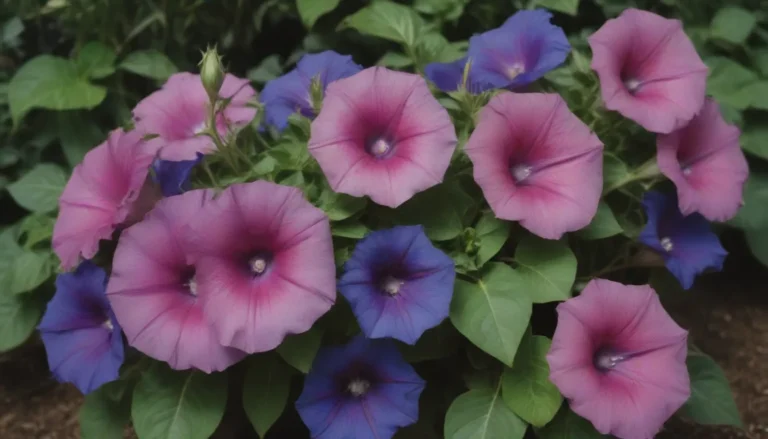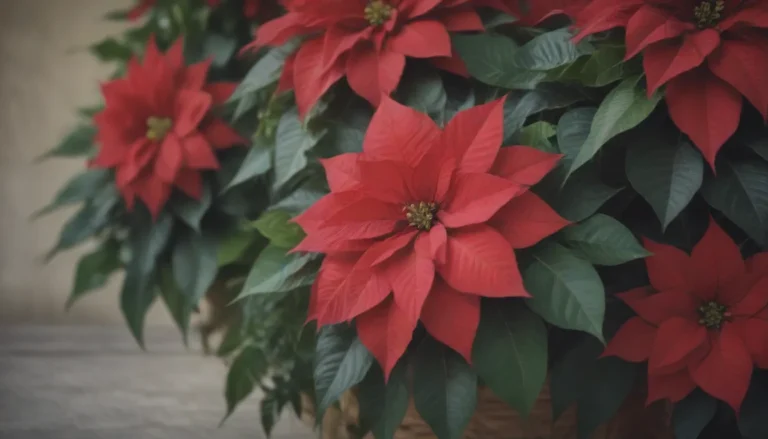Discover 10 Beautiful and Fast-Growing Flowering Vines to Enhance Your Garden

Are you looking to add a pop of color to your garden with some stunning flowering vines? Perhaps you have just built a trellis and want to find the perfect vine to cover it quickly. But with so many options out there, it can be overwhelming to choose the right vine that not only grows fast but also blooms prolifically without being invasive. In this article, we will explore ten fast-growing flowering vines that will add beauty and charm to your outdoor space.
Honeysuckle:
Honeysuckle, from the Lonicera genus, is a lovely twining vine known for its showy, fragrant, tubular blooms and oval-shaped shiny leaves. In warmer climates, many varieties are evergreen, making them a great addition to your garden year-round. The flowers of honeysuckle attract hummingbirds, butterflies, bees, and other pollinators, adding even more life to your garden. With different sizes and hardiness levels, you can choose from varieties like the Goldflame honeysuckle or Coral honeysuckle, each offering a unique charm to your outdoor space.
- Name: Honeysuckle
- USDA Hardiness Zones:
- Bloom Season:
- Light:
- Soil:
Wisteria:
Known for its unmistakable bluish or purplish, fragrant racemes in the spring, wisteria is a popular choice for many gardeners. While Japanese and Chinese wisteria varieties can be invasive, the American wisteria offers a less aggressive alternative that still brings beauty to your garden. With its cascading flowers and vine-like growth habit, wisteria makes a stunning addition to arbors, trellises, and fences.
- Name: Wisteria
- USDA Hardiness Zones:
- Bloom Season:
- Light:
- Soil:
- Toxicity:
Bougainvillea:
If you live in a sunny, dry climate, bougainvillea is a fantastic choice for a fast-growing, colorful vine. With its vibrant papery bracts in shades of white, pink, purple, red, and yellow, bougainvillea adds a burst of color to any garden. This thorny vine can grow up to 40 feet tall and wide, so make sure to provide sturdy support like a wall or fence for it to climb and flourish.
- Name: Bougainvillea
- USDA Hardiness Zones:
- Bloom Season:
- Light:
- Soil:
Climbing Hydrangea:
While climbing hydrangea may start slowly, taking up to three to five years to reach the flowering stage, its patience pays off with fragrant, white lacy blooms all summer long. This vine can reach a height of 50 feet or more at maturity, creating a stunning backdrop to your garden with its delicate flowers and lush green foliage.
- Name: Climbing Hydrangea
- USDA Hardiness Zones:
- Bloom Season:
- Light:
- Soil:
- Toxicity:
Clematis:
With hundreds of species and thousands of cultivars, clematis offers a wide range of options for your garden. From white and blue to violet, purple, and pink, clematis blooms in various colors and shapes from late winter to early fall. Choose from native species like the white-flowering virgin’s bower or the purple clematis to introduce more local flora into your landscape.
- Name: Clematis
- USDA Hardiness Zones:
- Bloom Season:
- Light:
- Soil:
- Toxicity:
Purple Passionflower:
Native to North America, the purple passionflower is a hardy vine that grows up to 20 feet tall. While each flower only lasts about a day, the vine produces stunning blooms between midsummer and early fall that attract pollinators to your garden. Its delicate tendrils and vibrant flowers add a beautiful touch to any outdoor space.
- Name: Purple Passionflower
- USDA Hardiness Zones: 7-11
- Bloom Season:
- Light:
- Soil:
Trumpet Creeper:
Despite its aggressive growth habit, the trumpet creeper is a beloved vine for its trumpet-shaped, orange flowers that attract pollinators. Varieties like ‘Apricot’ and ‘Indian Summer’ are reportedly less invasive and can be controlled with proper pruning and maintenance. Make sure to provide a sturdy structure for this 30 to 40-foot vine to climb and thrive in your garden.
- Name: Trumpet Creeper
- USDA Hardiness Zones:
- Bloom Season: Summer
- Light:
- Soil:
- Toxicity:
Carolina Jessamine:
With its shiny, evergreen leaves and fragrant, yellow flowers, Carolina jessamine is a charming vine that blooms between February and April. Growing up to 20 feet tall, this vine climbs trellises gracefully, creating a stunning display of color and fragrance in your garden. Native to the South, Carolina jessamine is also a great choice as a groundcover.
- Name: Carolina Jessamine
- USDA Hardiness Zones:
- Bloom Season:
- Light:
- Soil:
Mandevilla:
These tropical flowering vines are known for their trumpet-shaped flowers in shades of pink, red, and white, adding a touch of elegance to any garden. With a mature size of 3 to 10 feet tall and wide, mandevilla vines bloom in summer and can even continue into the fall in warm climates. Choose from different species within the genus for varying bloom sizes and colors in your garden.
- Name: Mandevilla
- USDA Hardiness Zones:
- Bloom Season:
- Light:
- Soil:
Climbing Rose:
Climbing roses are a classic choice for adding vertical interest to your garden. With their extra-long canes that can reach up to 20 feet tall, climbing roses offer a stunning display of blooms in various colors and shapes. From vibrant pinks to soft whites, you can find a climbing rose variety that suits your garden style and climate. Make sure to provide proper support like a trellis for these tall roses to thrive and bloom abundantly.
- Name: Climbing Rose
- USDA Hardiness Zones:
- Bloom Season:
- Light:
- Soil:
In addition to the ten fast-growing flowering vines mentioned above, there are other options to consider for adding color and charm to your garden. For example, the chocolate vine is a perennial vine native to Asia that can grow up to 40 feet in a single growing season. If you’re looking to quickly cover a fence, consider planting annual vines like hyacinth beans or black-eyed Susan vine. For a more long-term solution, Virginia creeper is a native vine that thrives in partial shade and changes color in the fall to a striking reddish-orange hue.
Remember, when selecting a vine for your garden, it’s crucial to consider factors like USDA hardiness zones, bloom season, light requirements, soil preferences, and toxicity levels. By choosing the right vine for your specific needs and climate, you can create a beautiful and thriving garden that brings joy and beauty to your outdoor space.
In conclusion, adding fast-growing flowering vines to your garden can transform it into a vibrant and colorful oasis. Whether you’re looking to cover a trellis, hide an unsightly wall, or create more privacy, there are plenty of options to choose from. With the right care and maintenance, these vines will reward you with stunning blooms and lush foliage for years to come. So go ahead, plant some flowering vines in your garden and watch as they grow and bloom, adding a touch of magic and beauty to your outdoor space.





